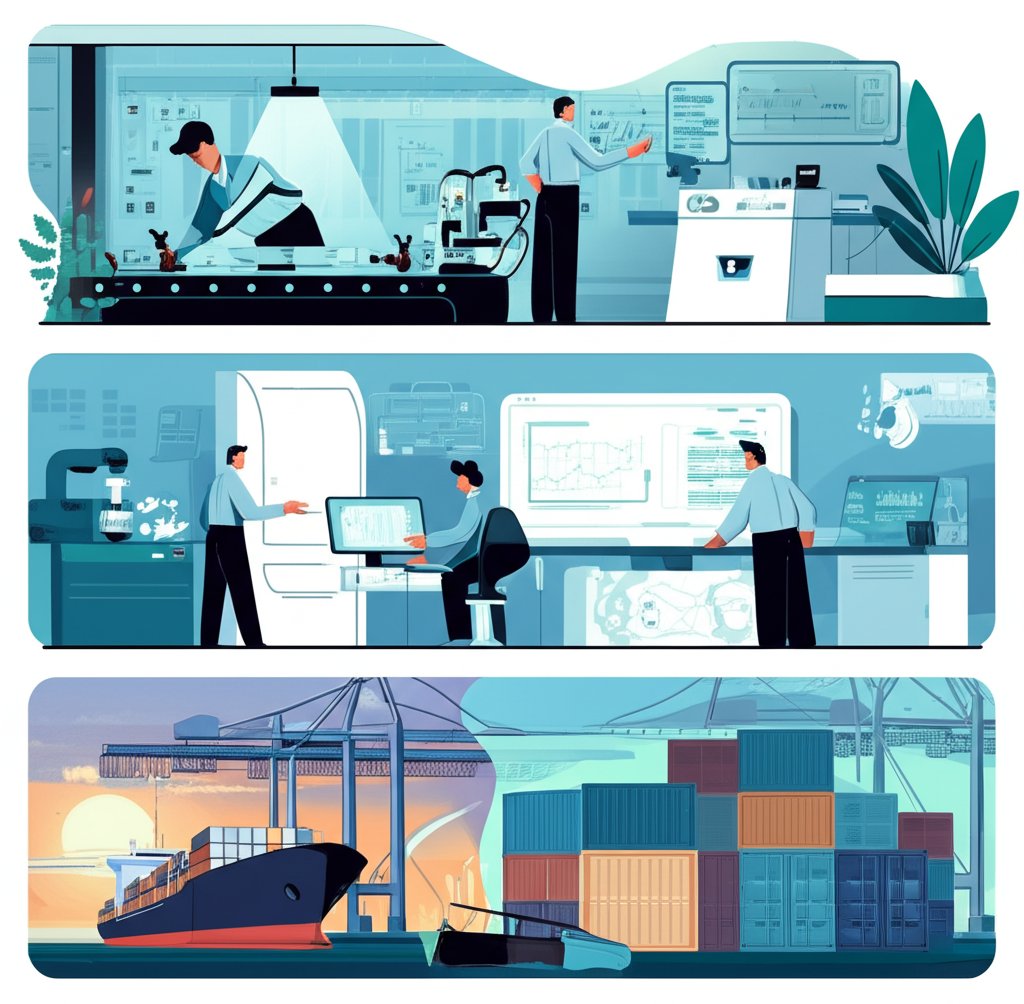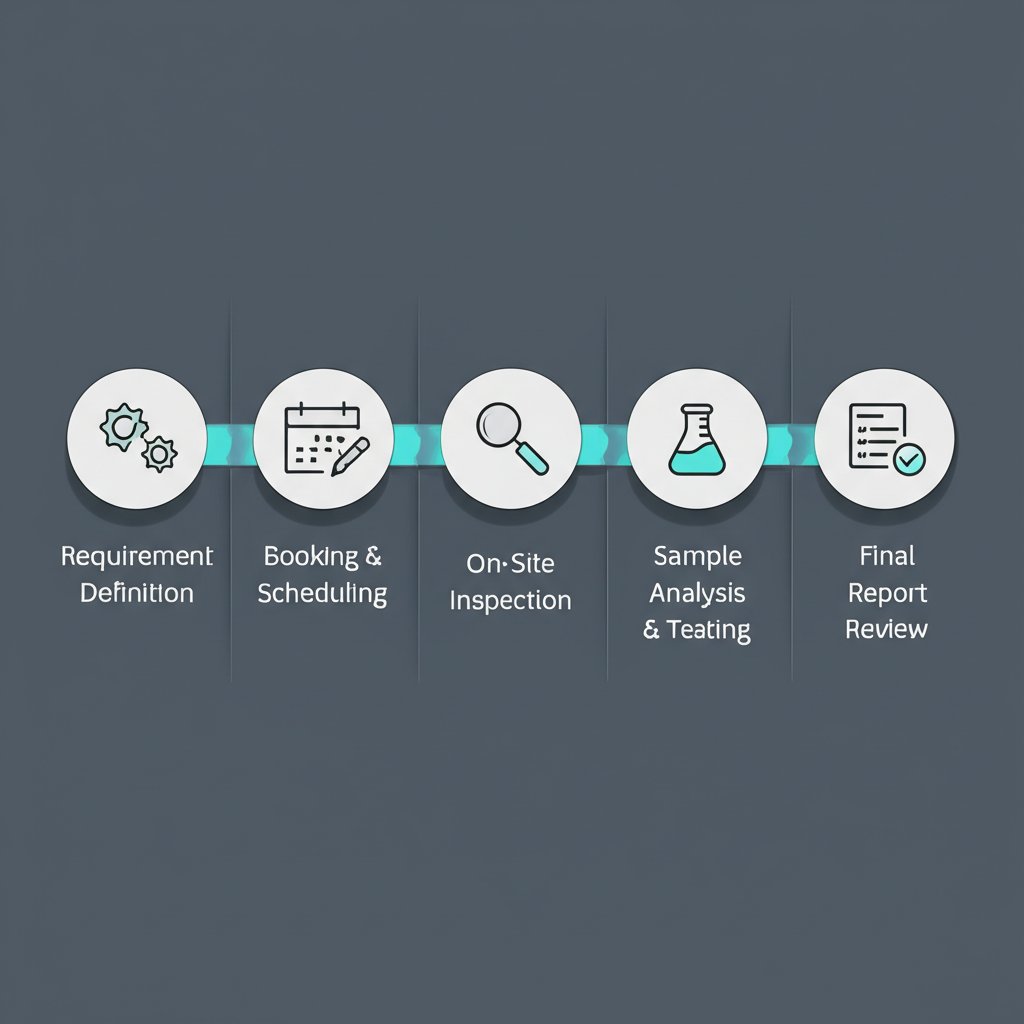
Why an Inspection Company in China Is Essential for Quality Control
When you’re sourcing products from China, have you ever wondered what really happens at the factory after you place your order? Or maybe you’ve heard stories about unexpected defects, shipment delays, or compliance issues that can turn a promising deal into a costly headache. Sounds complex? That’s exactly where an inspection company in China becomes your most valuable partner.
What Is an Inspection Company in China?
Simply put, an inspection company in China is an independent organization—not tied to the manufacturer or buyer—that evaluates your products, processes, or even suppliers to make sure everything meets your standards and contractual requirements. Their main goal is to deliver objective, unbiased assessments that help you avoid surprises and safeguard your investment .
- They check product quality and compliance before goods leave the factory.
- They help you catch issues early—before they become expensive problems.
- They act as your eyes and ears on the ground, especially when you can’t be there in person.
Why Is Quality Control in China So Important?
China is a powerhouse for global manufacturing, but with such scale comes a wide range of supplier capabilities and product quality. Even reputable factories can experience lapses—think of the infamous toy recalls or electronics that don’t meet certification standards. Without robust quality control in China, your brand reputation and bottom line are at risk.
Here’s why partnering with a local inspection expert makes sense:
- They know the local market and production practices. This means they can spot issues you might miss, from material substitutions to inconsistent workmanship.
- They bridge language and cultural gaps. Communication mishaps can lead to misunderstandings about product specs or timelines. Inspection companies employ bilingual staff who can clarify requirements and relay feedback accurately.
- They help you comply with international standards. From ISO certifications to local regulations, these professionals ensure your products meet the requirements of your target market.
What Will You Learn in This Guide?
This article is your roadmap to working confidently with an inspection company in China. Here’s what you’ll discover:
- The most common challenges importers face and how inspections help overcome them
- The range of services inspection companies offer—beyond just checking finished goods
- How to choose the right inspection partner for your business needs
- The typical workflow you can expect, from booking to final report
- Key benefits of professional quality control and how it protects your brand
- How to read and act on inspection reports for smarter decision-making
Imagine having peace of mind, knowing your products meet your standards before they ever leave China. By the end of this guide, you’ll be equipped with the knowledge to choose an inspection company in China that fits your goals—and ensures your supply chain is built on trust, transparency, and quality.

Why Your Business Needs a China Inspection Partner for Quality Assurance
Ever found yourself worrying about what could go wrong after placing an order with a Chinese supplier? From surprise defects to unexpected delays, the risks can be daunting. But what if you had a local ally dedicated to catching these issues before they impact your business? That’s where a china inspection partner steps in, transforming uncertainty into control and confidence.
Common Challenges When Sourcing from China
Importing from China can unlock cost savings and new market opportunities, but it’s not without its hurdles. Here are some of the most frequent challenges businesses face:
- Quality Defects: Even established factories can produce batches with inconsistent quality, leading to returns, rework, or dissatisfied customers.
- Non-Compliance: Products that don’t meet international or destination market standards can be held at customs or recalled, putting your reputation and finances at risk.
- Shipping Delays: Late deliveries can disrupt your supply chain, cause stockouts, or result in missed sales windows.
- Communication Barriers: Language differences and varying business cultures often lead to misunderstandings about specifications, timelines, or quality expectations.
- Supplier Instability: Financially troubled factories may cut corners, withhold goods, or even disappear after receiving payment.
How a China Inspection Partner Mitigates Risks
Imagine having a local expert who understands the intricacies of Chinese manufacturing and can act as your eyes and ears on the ground. Here’s how a china inspection partner helps you navigate and overcome these challenges:
- Early Detection of Defects: On-site inspections catch issues before products leave the factory, allowing for corrective action without costly returns or recalls. This proactive approach is the backbone of quality assurance in China.
- Ensuring Consistency: Regular inspections during production ensure that every batch meets your standards, not just the samples. This consistency builds trust with your customers and reduces surprises.
- Local Expertise: Inspection partners understand regional dialects, business customs, and production practices, bridging gaps in communication and reducing the risk of misunderstandings.
- Supplier Accountability: The presence of a third-party inspector encourages factories to adhere to agreed quality and delivery terms, knowing their work will be independently verified.
- Transparency and Traceability: Detailed inspection reports give you a clear view of your supply chain, from raw materials to finished goods, helping you maintain control and meet regulatory requirements.
Cost-Effective Quality Control
Think hiring an inspection partner is too expensive? In reality, it’s often far more affordable than fixing mistakes after products are shipped. Consider these cost-saving benefits:
- Avoiding Expensive Recalls: Catching defects before shipping prevents costly recalls, legal claims, or damaged brand reputation.
- Reducing Wasted Resources: You won’t need to fly staff to China or manage time-consuming disputes with suppliers—your inspection partner handles it locally and efficiently.
- Preventing Lost Sales: Timely detection of production or shipping issues helps you maintain inventory levels and meet customer demand.
Protecting Your Brand and Building Long-Term Success
Ultimately, partnering with a trusted inspection company is about more than avoiding problems—it’s about building a supply chain that supports your business growth. You’ll notice improved product quality, stronger supplier relationships, and a reputation for reliability in your market.
Next, let’s explore the specific services a quality inspection partner provides, so you can see exactly how they support your business from the factory floor to the customer’s hands.

Key Services Offered by an Inspection Company in China
When you’re sourcing products from China, have you ever wondered who makes sure your order is exactly what you expect—before it ships halfway across the world? Imagine discovering a last-minute defect or missing documentation only after your goods arrive. That’s why understanding the full range of services provided by an inspection company in China is so crucial. Let’s break down the essential quality control checkpoints that keep your supply chain secure and your brand reputation intact.
Factory Audit China: Evaluating Your Supplier Before Production
Think of a factory audit in China as your first line of defense. Before placing a major order, how do you know if your supplier is capable, ethical, and reliable? A factory audit provides a comprehensive on-site assessment of the manufacturer’s facilities, quality management systems, production capacity, and ethical standards. This service helps you:
- Verify business licenses and certifications
- Assess factory cleanliness, organization, and safety
- Review quality control processes and past compliance records
- Identify potential risks, such as labor violations or capacity bottlenecks
By conducting a factory audit, you gain confidence that your chosen supplier can meet your requirements—not just on paper, but in real-world conditions.
Pre-Production and First Article Inspection: Setting the Stage for Success
Once you’ve selected a supplier, the next step is ensuring that the right materials and processes are in place before mass production begins. Here’s how two early-stage inspections make a difference:
- Pre-Production Inspection (PPI): This check reviews raw materials, components, and initial production setups. It’s designed to catch issues like substandard materials or deviations from your approved samples before they escalate.
- First Article Inspection (FAI): Conducted after the first batch is produced, FAI verifies that all engineering, design, and specification requirements are fully understood and implemented. Imagine finding a critical error in the first sample—FAI allows for immediate corrections, saving time and money down the line.
During Production Inspection: Quality Control on the Assembly Line
Ever worry that quality might slip halfway through production? A during production inspection (sometimes called DUPRO) is typically performed when 20–50% of goods are completed. Inspectors check for consistency, workmanship, and adherence to your standards. If defects are found, corrective actions can be implemented early, preventing costly rework or delays later.
Pre-Shipment Inspection China: The Final Quality Gate
Here’s where many businesses focus their attention—right before goods leave the factory. Pre-Shipment Inspection (PSI): This is a crucial final check of finished goods before they leave the factory, verifying order specifications, quantity, quality, and packaging. Many businesses rely on a thorough Pre-Shipment Inspection to prevent costly errors. PSI typically uses AQL (Acceptable Quality Limit) sampling to ensure the batch meets your defined standards. This step is essential for:
- Confirming all products are finished and correctly packed
- Checking labeling, barcodes, and documentation
- Identifying any last-minute defects or shortages
- Giving you the confidence to release payment and arrange shipment
Container Loading Supervision: Securing Your Shipment
Ever wondered if your goods are loaded correctly and securely? Container loading supervision takes place at the manufacturer’s warehouse or the shipping facility. Inspectors oversee the loading process to:
- Ensure the correct quantity and styles are loaded
- Verify packaging integrity and proper stacking
- Prevent mix-ups, damage, or missing cartons during transit
Additional Services: Defects Sorting and Sample Testing
Sometimes, issues are discovered that require more targeted solutions. Inspection companies may offer:
- Defects Sorting Service (DSS): A 100% inspection to separate defective units from acceptable ones—especially useful for B2C or e-commerce shipments where every item matters.
- Sample Testing and Lab Analysis: For products with strict regulatory or safety requirements (think electronics, toys, or textiles), lab testing ensures compliance with international standards.
Why Choose a Comprehensive Provider?
Imagine having a single partner who can handle every stage of quality control—from factory audit China to pre-shipment inspection China and container loading supervision. That’s where comprehensive providers like Eagle Eyes Quality Inspection Services shine. Their extensive geographic coverage across virtually all major manufacturing hubs gives you unmatched flexibility, no matter where your supplier is located. By centralizing your quality assurance needs with one experienced team, you streamline communication, reporting, and issue resolution—saving time and reducing risk.
Understanding these services helps you build a robust quality control strategy, tailored to your unique supply chain. Next, let’s dig into how to choose the right inspection partner for your needs—because not all providers are created equal, and your business deserves the best fit.
How to Choose the Right Inspection Company in China for Your Needs
Actionable Criteria for Selecting the Best Inspection Company in China
When you’re faced with dozens of inspection providers, how do you separate the truly reliable partners from the rest? Imagine you’re about to place a large order—your reputation and investment are on the line. Getting this decision right can make all the difference. Let’s walk through the essential steps to choose inspection company China that fits your business and product needs.
1. Define Your Inspection Requirements
- Type of Inspection: Do you need pre-production, during production, or pre-shipment checks? Each stage requires different expertise.
- Industry Specialization: Are you sourcing electronics, textiles, machinery, or something else? Look for a company with proven experience in your sector (ChinaLookGroup).
- Frequency: Will you need regular, ongoing inspections or just a one-time service?
Defining these needs up front helps you filter out providers lacking the right capabilities.
2. Check Accreditation and Certifications
- ISO 9001: Indicates adherence to international quality management standards.
- ISO 17020: Relevant for inspection bodies, confirming operational competency.
- Industry Memberships: Affiliations with recognized associations add credibility.
These certifications signal the company’s professionalism and commitment to quality.
3. Evaluate Industry Experience and Inspector Qualifications
- Track Record: Has the company worked with products like yours? Request case studies or client references.
- Inspector Background: Are their inspectors trained in engineering, manufacturing, or relevant technical fields? Ongoing training is a plus.
Companies with deep expertise in your product category are more likely to spot subtle issues others might miss.
4. Compare Service Scope and Geographic Coverage
- Range of Services: Does the provider offer everything from factory audits to container loading supervision? A broad service portfolio means you won’t need to juggle multiple vendors.
- Coverage: Can they reach all your suppliers—even those in remote or multiple regions?
When evaluating potential partners, it’s important to look for comprehensive china inspection services that align with your specific product and quality requirements to ensure you find a truly reliable company.
5. Assess Reporting Standards and Communication
- Report Clarity: Are inspection reports detailed, clear, and actionable? Sample reports can reveal a lot about their thoroughness.
- Communication: Is the team responsive and able to communicate in your preferred language? Fast, clear responses are crucial for resolving issues quickly.
Transparent reporting and open communication help you make confident decisions, even from afar.
6. Ensure Pricing Transparency and Fair Contract Terms
- Transparent Quotes: Are all fees—including travel and reporting—spelled out up front?
- Contract Clauses: Review delivery timelines, payment terms, and after-sales support. Look for flexibility if your needs change.
Clear pricing and fair terms prevent surprises and help build trust from the start.
7. Check Reputation and Customer Feedback
- Online Reviews: What do other importers say about the company’s reliability, speed, and service quality?
- Industry Recommendations: Ask peers or business partners for their experiences.
Real-world feedback is invaluable for identifying the best inspection company in China for your situation.
8. Consider a Trial Inspection
- Start with a small batch or single inspection to evaluate performance before committing long-term.
- Use the results to adjust your requirements or explore other providers if needed.
Key Takeaway
Choosing the right inspection partner is about more than just ticking boxes—it’s about safeguarding your business, your customers, and your reputation. Invest the time to vet providers thoroughly, and you’ll build a foundation for long-term quality and trust in your supply chain.
Once you’ve selected your partner, understanding their process will help you prepare for smooth cooperation. Next, let’s explore what the standard inspection process looks like, so you know exactly what to expect from booking to final report.

The Standard Inspection Process in China
When you’re preparing to work with an inspection company in China, do you ever wonder what the actual process looks like? Is it just a one-time visit, or a series of carefully planned steps? Understanding the inspection process China will help you avoid surprises, prepare the right documentation, and make the most of your investment in quality control.
1. Initial Consultation and Defining Requirements
Everything starts with a clear conversation. Before any inspection takes place, you’ll need to define exactly what you expect from your supplier and the inspection team. This means sharing product specifications, quality standards, packaging details, and any compliance requirements. The inspection company will often help you create a detailed checklist—covering dimensions, materials, labeling, and even specific tests or certifications you need.
- List out your product requirements and quality benchmarks.
- Agree on which inspection services you need (pre-production, during production, pre-shipment, etc.).
- Finalize the inspection checklist with input from your supplier and the inspection company.
Imagine you’re ordering 5,000 custom electronics—your checklist might include safety certifications, drop tests, and barcode accuracy. The more specific you are, the smoother the process will be.
2. Booking the Inspection
Once your requirements are set, it’s time to schedule the inspection. You’ll coordinate with both your supplier and the inspection company to lock in a date. It’s best to inform your supplier early—this encourages higher production standards and helps avoid last-minute delays. For pre-shipment inspections, booking at least three days before the goods are scheduled to leave the factory is recommended.
- Confirm the production timeline with your supplier.
- Book your inspection date in advance—ideally, before the goods are packed.
- Share the finalized checklist and any special instructions with the inspection company.
Tip: Don’t let your supplier choose the inspection company for you—keep the process independent for unbiased results.
3. On-Site Inspection: What Happens at the Factory?
On the day of inspection, a trained inspector visits the factory. Their tasks depend on the type of inspection:
- Pre-Production: Review raw materials and production setup.
- During Production: Check partially completed goods for consistency.
- Pre-Shipment: Examine finished products, packaging, and labeling.
- Container Loading Supervision: Oversee loading to ensure correct quantities and secure packing.
The inspector follows your checklist and industry standards, taking notes, photos, and sometimes conducting on-the-spot tests. This is where the process becomes truly hands-on.
4. AQL Inspection China: Sampling and Defect Classification
Ever wondered how inspectors decide how many products to check? That’s where AQL inspection China comes in. AQL, or Acceptable Quality Limit, is an internationally recognized method for sampling a portion of the order. Instead of checking every single unit, inspectors randomly select a sample size based on your total order and agreed AQL level.
- Sample Selection: The inspector pulls a random sample (the size depends on your order and inspection level—G-I, G-II, or G-III).
- Defect Classification: Defects are categorized as critical, major, or minor, each with its own tolerance level.
- Decision: If the number of defects is within the AQL limits, the batch passes; if not, it may be rejected or require corrective action.
This method ensures a fair, statistically valid check without the time and cost of inspecting every unit.
5. Reviewing the Inspection Report and Next Steps
After the inspection, you’ll receive a detailed report—usually within 24 hours. This document includes:
- Overall inspection results (pass/fail)
- Photos of products, packaging, and any defects found
- Measurements and test results
- Defect counts by category (critical, major, minor)
- Inspector’s comments and recommendations
Review the report carefully with your supplier. If everything is acceptable, you can approve shipment and release payment. If not, work with your supplier to address issues—sometimes a re-inspection is needed to confirm corrections.
Quick Reference: The Inspection Process in China
| Step | What Happens | Key Tips |
|---|---|---|
| 1. Define Requirements | Set clear product specs, create a checklist | Be as detailed as possible |
| 2. Book Inspection | Schedule with supplier and inspection company | Book early to avoid delays |
| 3. On-Site Visit | Inspector checks goods at factory | Use an independent provider |
| 4. AQL Sampling | Random sample inspected, defects classified | Agree on AQL levels up front |
| 5. Report & Action | Review results, approve or request fixes | Communicate clearly with supplier |
By understanding and preparing for each step of the inspection process in China, you’ll be better equipped to manage risks, ensure quality, and keep your supply chain running smoothly. Next, let’s take a closer look at the benefits you can expect when partnering with a professional inspection service—and how it can transform your sourcing strategy in the long run.
Unlocking the Quality Inspection Benefits China Offers
What Are the Real Advantages of a Professional Inspection Service China?
Ever wondered how the world’s top brands avoid costly product recalls, customer complaints, and supply chain headaches when sourcing from China? The answer often lies in their choice to partner with a professional inspection service China. But what does that really mean for your business? Let’s break down the key benefits—both seen and unseen—that set your supply chain up for success.
Tangible Benefits: The Immediate Wins
- Improved Product Quality and Reliability: Routine, expert-led inspections catch defects early, ensuring that only products meeting your standards reach your customers. This reduces returns, warranty claims, and negative reviews.
- Reduced Risk of Defects and Losses: By identifying issues at the source, you avoid expensive rework, recalls, or unsellable inventory. Imagine the savings when a shipment is stopped before thousands of faulty units leave the factory.
- Better Supplier Management: Professional inspections create a transparent feedback loop. Suppliers know their work is being independently verified, which encourages higher standards and more open communication.
- Informed Decision-Making: Detailed, unbiased inspection reports give you the data needed to accept, reject, or request improvements—empowering you to make smarter, faster decisions.
- Long-Term Cost Savings: While inspections are an upfront investment, they consistently cost less than dealing with the fallout from defective goods, missed deadlines, or lost customer trust.
Intangible Benefits: The Strategic Edge
- Enhanced Brand Reputation: Consistently delivering quality builds your brand’s credibility and customer loyalty. In an era where online reviews and social sharing can make or break a business, reputation is everything.
- Compliance with International Standards: Professional inspection services are well-versed in ISO, CE, and other global certifications. This ensures your products meet regulatory demands, avoiding customs issues and legal risks.
- Supply Chain Transparency: With clear, third-party verification at every step, you gain visibility into the entire production process. This transparency is increasingly demanded by customers and regulators alike.
- Peace of Mind: Imagine knowing your products are being checked by local experts—even when you can’t be there. This confidence allows you to focus on growing your business, not chasing down problems.
Why Choose a Dedicated Expert Like Eagle Eyes Quality Inspection Services?
When you partner with a specialized provider, you’re not just buying a checklist—you’re gaining a strategic ally with deep local expertise. For example, Eagle Eyes Quality Inspection Services stands out for its comprehensive coverage across China’s major manufacturing regions, its rigorous approach to pre-shipment inspections, and its ability to tailor services for diverse industries. This means your business can rely on consistent quality checks, regardless of your supplier’s location or product type.
Here’s a quick summary of the quality inspection benefits China offers when you work with a professional partner:
| Benefit | How It Helps Your Business |
|---|---|
| Product Quality Assurance | Fewer defects, higher customer satisfaction |
| Risk Reduction | Prevents costly recalls and returns |
| Supplier Accountability | Drives better performance and transparency |
| Cost Savings | Reduces waste, rework, and after-sale expenses |
| Regulatory Compliance | Keeps shipments moving smoothly to global markets |
| Brand Reputation | Builds trust and loyalty with customers |
Ultimately, investing in a professional inspection service China is about more than ticking boxes—it’s about building a resilient, trusted, and scalable supply chain. As you review your next inspection report, you’ll see firsthand how these benefits translate into real-world results. Ready to make the most of your quality control partnership? Let’s dive into how to interpret and act on inspection findings in the next section.

Understanding Inspection Reports and Next Steps
When you receive an inspection report China from your quality control partner, do you know what to look for—or how to turn those findings into action? If you’ve ever felt overwhelmed by technical terms, long defect lists, or pages of photos, you’re not alone. Let’s break down how to interpret these reports so you can make smart, timely decisions for your business.
What’s Inside a Typical Inspection Report?
Imagine opening your inspection report for the first time. You’ll usually find several key sections, including:
- Overall Findings: A summary that states whether your order has passed or failed based on agreed standards and.
- Defect List: Detailed records of any issues found, categorized by type and severity.
- Photos: Visual evidence of the inspected goods, packaging, and any defects—making it easier to spot problems.
- Measurements and Test Results: Data on product dimensions, weights, and any on-site tests performed.
- Inspector Comments: Notes on process, packaging, and any special observations or recommendations.
These sections help you quickly assess if your shipment meets requirements or if corrective action is needed.
Defect Classification China: What Do Critical, Major, and Minor Mean?
Not all defects are created equal. In every inspection report China, defects are typically sorted into three main categories—each with different implications for your decision-making. Here’s a quick overview:
| Defect Type | Definition | Implications |
|---|---|---|
| Critical | Defects that make the product unsafe or unusable, or may lead to recalls or legal issues. | Zero tolerance—any critical defect typically means the batch fails inspection and must be reworked or rejected. |
| Major | Defects that affect function, performance, or appearance and are likely to result in customer complaints or returns. | Low tolerance—if major defects exceed your set limit, the batch may need rework or partial rejection. |
| Minor | Small issues that don’t affect use or safety and are often not noticed by end customers. | Higher tolerance—minor defects are usually allowed up to a certain threshold, but too many can still cause a failed inspection. |
Your inspection company determines these categories based on your product specs, industry standards, and agreed tolerance levels. For example, a loose thread on a t-shirt might be minor, while a broken zipper is major, and a sharp metal edge is critical.
How to Use the Report: Next Steps for Importers
So, what should you do once you’ve reviewed your inspection report?
- Communicate Clearly with Suppliers: Highlight unacceptable defects and specify what needs fixing. Attach photos or page references from the report for clarity.
- Decide on Acceptance or Rework: Use the defect counts and classifications to determine if the batch meets your standards. If not, request rework or replacement before approving shipment.
- Document and Update Requirements: Add recurring issues to your product specification or quality checklist. This helps prevent the same problems in future orders.
- Create an Action Plan: If there are pending issues, set deadlines for supplier corrections and, if needed, schedule a re-inspection to verify fixes.
Many importers find it helpful to use a checklist or template when reviewing inspection reports. This ensures you don’t overlook important details and helps standardize communication with suppliers.
Checklist for Efficient Inspection Report Review
- Did the batch pass or fail overall?
- Are any critical defects present?
- Do major and minor defects exceed agreed limits?
- Are measurements and tests within specification?
- Is packaging, labeling, and documentation correct?
- Are photos clear and representative of the shipment?
- What corrective actions, if any, are required?
By following this structured approach, you’ll not only catch problems early but also build a foundation for continuous improvement with your suppliers. Remember, your inspection report isn’t just a scorecard—it’s a roadmap for better quality and smoother shipments. In the final section, we’ll summarize the key takeaways and show you how to turn these insights into long-term supply chain success.
Choosing an Inspection Company China
When you think about sourcing from China, what’s the one thing you can’t afford to leave to chance? If you said product quality or supply chain security, you’re absolutely right. Throughout this guide, we’ve explored how partnering with a trusted inspection company China is more than just a checkbox—it’s a strategic investment in your business’s future.
Key Takeaways: Why Due Diligence and Proactive Quality Control Matter
- Risk Mitigation: By working with a professional inspection partner, you minimize the chances of receiving subpar or non-compliant goods. Early detection of defects, compliance issues, or shipment discrepancies saves you from costly recalls and customer complaints (ChinaLookGroup).
- Brand Protection: Consistent quality control upholds your brand’s reputation and helps you stand out in competitive markets. Imagine the peace of mind that comes with knowing your products consistently meet expectations.
- Cost Savings: Proactive inspections cost far less than addressing problems after goods arrive. You’ll avoid rework, lost sales, and the hidden costs of damaged customer trust.
- Supply Chain Transparency: Detailed inspection reports and clear communication give you visibility at every stage, building stronger supplier relationships and enabling faster, smarter decisions.
- Compliance and Scalability: A reputable quality control partner China understands both local regulations and international standards, helping your business scale with confidence across borders.
Taking Action: How to Secure Your Success
Ready to turn quality control from a worry into a competitive advantage? Here’s a practical checklist to guide your next steps:
| Step | What to Do |
|---|---|
| 1. Define Your Needs | Clarify your product requirements, quality standards, and inspection frequency. |
| 2. Vet Providers | Check qualifications, certifications, service scope, and customer feedback. |
| 3. Prioritize Communication | Ensure your inspection partner offers clear, timely reporting and support. |
| 4. Start with a Trial | Test the service with a small order or batch to evaluate performance. |
| 5. Build Long-Term Collaboration | Use inspection insights to refine processes and strengthen supplier partnerships. |
For those seeking a seamless experience and robust coverage, choosing a specialized partner like Eagle Eyes Quality Inspection Services means you benefit from local expertise, comprehensive service options, and support that scales as your business grows. Their broad operational reach across China’s manufacturing regions makes them an ideal choice for importers who value reliability and peace of mind.
In today’s fast-paced global market, quality can’t be left to chance. Investing in a trusted inspection company China is the smartest way to safeguard your supply chain, protect your reputation, and unlock long-term business success. Imagine your next shipment arriving exactly as expected—no surprises, just confidence. That’s the power of choosing the right quality control partner China for your journey ahead.
Frequently Asked Questions About Inspection Companies in China
1. How can I verify if a company in China is legitimate?
To verify a Chinese company, check the National Enterprise Credit Information Publicity System for the official business name and registration number. Cross-reference these with the details provided by the company. For added assurance, use a third-party inspection company like Eagle Eyes Quality Inspection Services to conduct a factory audit and confirm the supplier’s credentials before placing an order.
2. What is a Chinese inspection and why is it important?
A Chinese inspection involves a third-party expert evaluating products, production processes, or suppliers to ensure they meet your quality and compliance standards. This process is crucial for importers to avoid defects, non-compliance, and shipment delays, reducing the risk of costly problems and protecting your brand reputation.
3. What are the main services offered by inspection companies in China?
Inspection companies in China typically provide factory audits, pre-production inspections, first article inspections, during production checks, pre-shipment inspections, container loading supervision, and additional services like defect sorting and sample testing. Comprehensive providers, such as Eagle Eyes Quality Inspection Services, offer end-to-end solutions across all major manufacturing regions.
4. How do I choose the best inspection company in China for my business?
Look for an inspection company with relevant accreditations (such as ISO 9001), proven experience in your industry, extensive geographic coverage, clear reporting standards, and transparent pricing. Reading customer feedback and starting with a trial inspection can also help you find a reliable partner that matches your needs and product requirements.
5. What is an AQL inspection and how does it work?
AQL (Acceptable Quality Limit) inspection is a statistical sampling method used by inspection companies to determine if a batch of products meets predefined quality standards. Inspectors randomly select a sample from the shipment, classify any defects as critical, major, or minor, and decide if the batch passes or fails based on the agreed AQL thresholds. This ensures efficient and fair quality checks without inspecting every unit.



